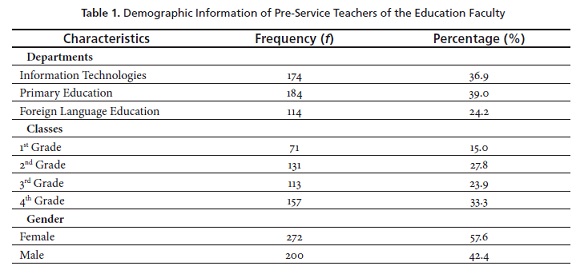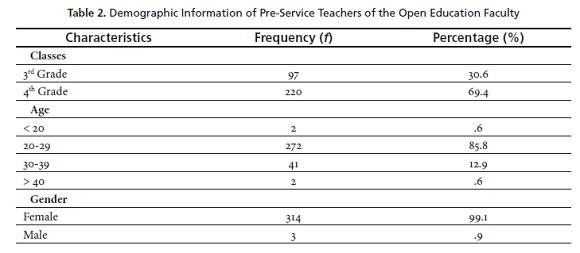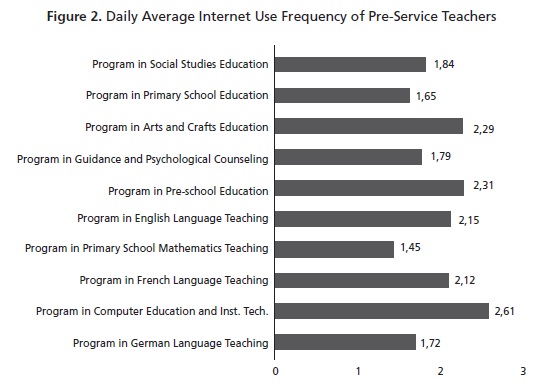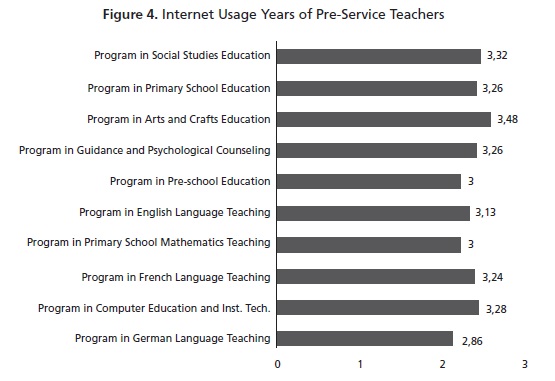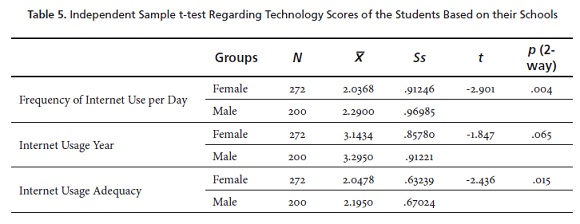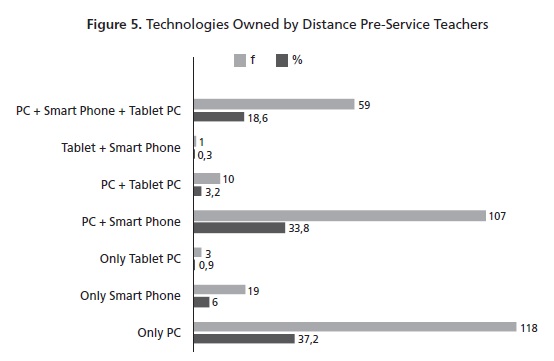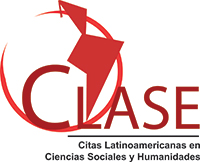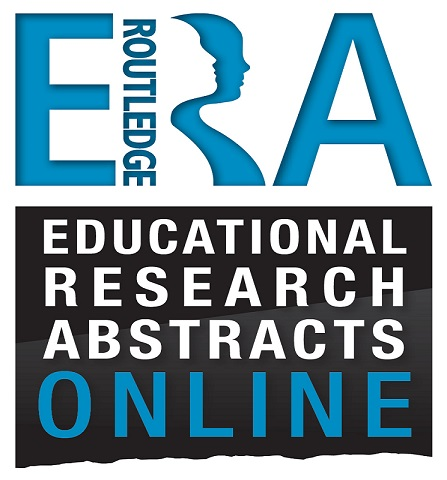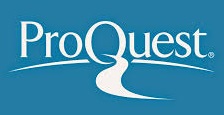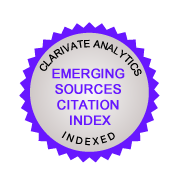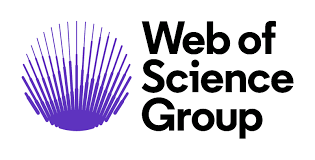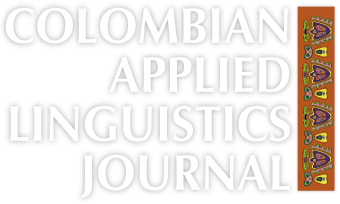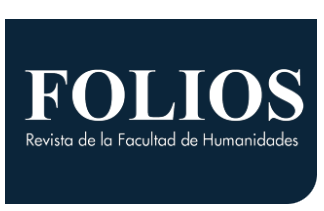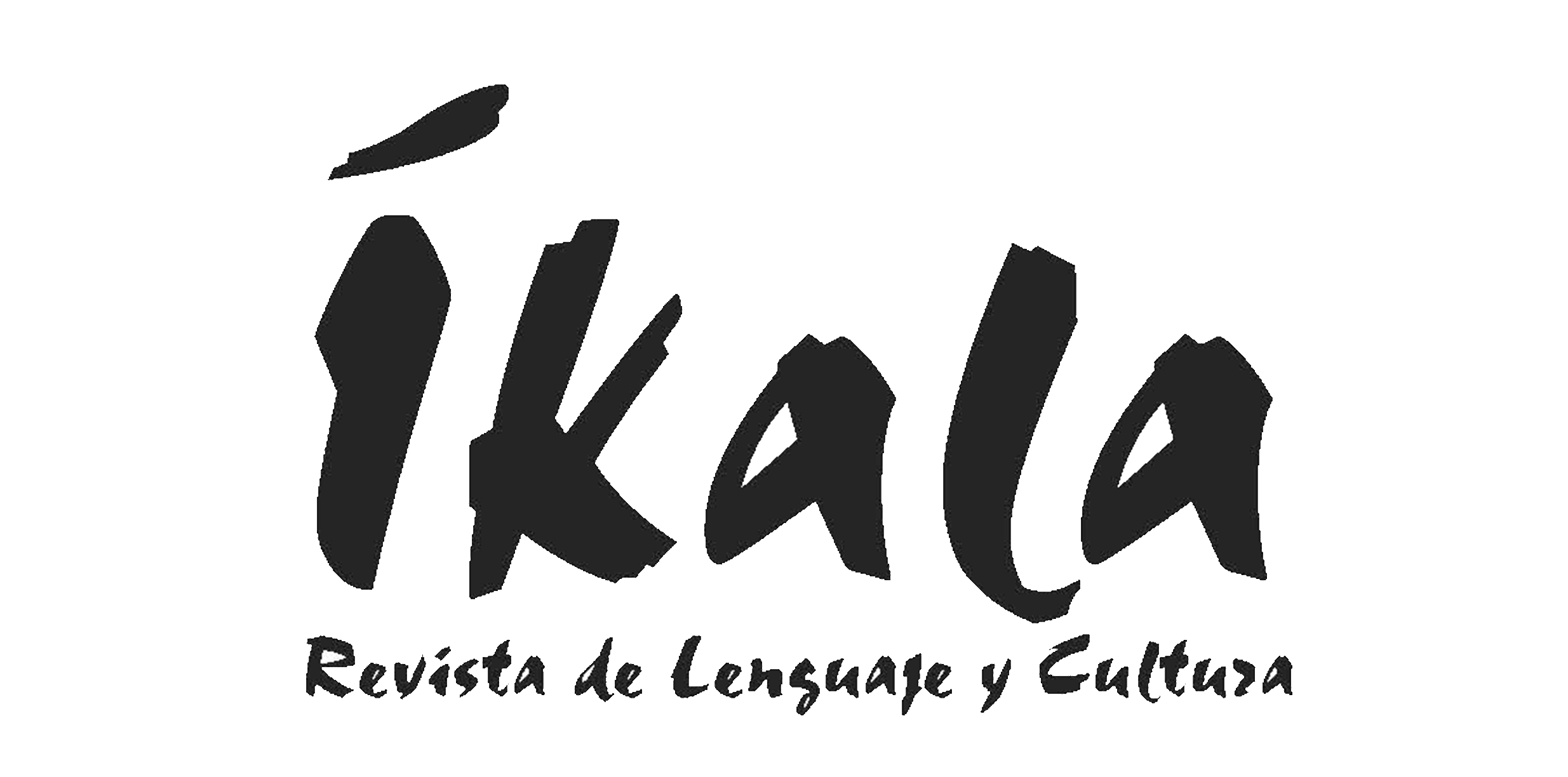
Published
Comparing the Internet Usage of Pre-service Language Teachers With Teachers of Other Subjects: Distance Learning vs. On-Campus Learning
Comparación del uso de Internet entre docentes de idiomas en formación y docentes de otras áreas: educación a distancia frente a presencial
DOI:
https://doi.org/10.15446/profile.v19n1.54184Keywords:
Internet in education, open and distance education, pre-service language teachers (en)educación abierta y a distancia, Internet en la educación, profesores de idiomas en formación (es)
Teachers play a crucial role in helping individuals gain adequate Internet competency, which requires teachers themselves to be Internet-literate. The purpose of this study is to investigate the Internet use of the distance and on-campus pre-service teachers of language and other disciplines by multiple parameters. A total of 789 teacher candidates participated in this survey. The findings show that the candidate teachers in on-campus and distance-learning programs have an average level of Internet usage adequacy and that the younger candidate teachers and those in higher classes use the Internet more frequently. Pre-service foreign language teachers have been found to have a moderate level of Internet usage frequency, adequacy and technology ownership in comparison with the other preservice teacher groups.
https://doi.org/10.15446/profile.v19n1.54184
Comparing the Internet Usage of Pre-service Language Teachers With Teachers of Other Subjects: Distance Learning vs. On-Campus Learning
Comparación del uso de Internet entre docentes de idiomas en formación y docentes de otras áreas: educación a distancia frente a presencial
Mehmet Firat*
Harun Serpil**
Anadolu University, Yunusemre, Turkey
*mfirat@anadolu.edu.tr
**hserpil@anadolu.edu.tr
This article was received on November 13, 2015, and accepted on July 21, 2016.
How to cite this article (APA 6th ed.):
Firat, M., & Serpil, H. (2017). Comparing the Internet usage of pre-service language teachers with teachers of other subjects: Distance learning vs. on-campus learning. PROFILE Issues in Teachers’ Professional Development, 19(1), 55-72. https://doi.org/10.15446/profile.v19n1.54184.
This is an Open Access article distributed under the terms of the Creative Commons license Attribution-NonCommercial-NoDerivatives 4.0 International License. Consultation is possible at http://creativecommons.org/licenses/by-nc-nd/4.0/.
Teachers play a crucial role in helping individuals gain adequate Internet competency, which requires teachers themselves to be Internet-literate. The purpose of this study is to investigate the Internet use of the distance and on-campus pre-service teachers of language and other disciplines by multiple parameters. A total of 789 teacher candidates participated in this survey. The findings show that the candidate teachers in on-campus and distance-learning programs have an average level of Internet usage adequacy and that the younger candidate teachers and those in higher classes use the Internet more frequently. Pre-service foreign language teachers have been found to have a moderate level of Internet usage frequency, adequacy and technology ownership in comparison with the other preservice teacher groups.
Key words: Internet in education, open and distance education, pre-service language teachers.
Los maestros juegan un papel crucial para facilitar que las personas adquieran competencias adecuadas para el uso de Internet. Esto requiere que los maestros mismos sean diestros en dichas competencias. El propósito de este estudio es investigar el uso de Internet, a distancia y dentro del campus, de los futuros profesores. Un total de 789 docentes en formación participaron en este estudio-encuesta. Los resultados muestran que los docentes, tanto dentro del campus como en los programas de aprendizaje a distancia, tienen un nivel medio en lo que respecta al uso de Internet. Los docentes más jóvenes y los mayores utilizan Internet con más frecuencia. Se ha encontrado que la suficiencia y la apropiación de la tecnología, así como la frecuencia de uso de Internet por parte de los futuros profesores de idiomas, son moderadas en comparación con docentes en formación de otras áreas.
Palabras clave: educación abierta y a distancia, Internet en la educación, profesores de idiomas en formación.
Introduction
The Information Technology (IT) trend has taken over the world with the rapid popularization of the Internet, leading to its ubiquitous use in education and bringing out important innovations in the field (Becker, 1999). The Internet has helped improve the speed and scale of the development of today’s technology and allowed it to acquire new dimensions. As a result, the need for Internet-literate individuals has grown (Coiro, Knobel, Lankshear, & Leu, 2014). To date, various studies have been conducted regarding media literacy, information literacy, computer literacy, technology literacy, and Internet literacy (Leu, Kinzer, Coiro, Castek, & Henry, 2013) and, more specifically, regarding the digital literacy of foreign language teachers (Guikema & Menke, 2014), and the internet literacy of English as a foreign language (EFL) teachers (Bolandifar, 2013; Cakir & Atmaca, 2015; Çelik, 2013; Cirit, 2015; Dashtestani, 2014; Dias & Bocorny, 2014; Khany & Boghayeri, 2013; Khassawneh, 2012; Kia Heirati & Ahmadi Alashti, 2015; Shin & Son, 2007). Providing numerous opportunities for using authentic materials, unlimited learning, and synchronous or asynchronous communication styles, foreign language teachers in their teaching have greatly benefited from the Web 2.0 tools like blogs, wikis, podcasts, and social networking (Sturm, Kennell, McBride, & Kelly, 2009).
Internet literacy is closely related to computer literacy, which is now of great importance in our everyday life (Dinev & Hart, 2005). A skills-based definition of Internet literacy includes viable research strategy, semiotics, and political debates (Livingstone, 2004). Livingstone and Helsper (2010) defined Internet literacy as a multidimensional construct that encompasses the abilities to access, analyze, evaluate, and create online content. Internet literacy can be considered to be a type of media literacy (Livingstone, 2004). Basically, media literacy can be defined as the ability and skill to analyze, evaluate, communicate, and access unwritten and written messages in various digital formats. On the other hand, Internet literacy can be defined as the skill of finding, editing, understanding, analyzing, evaluating, and producing information through the Internet. Internet literacy has become an essential competency for people today. Helping individuals gain this competency is socially accepted as a teacher’s duty and responsibility (Kurbanoğlu & Akkoyunlu, 2002). Most of the research on the Internet literacy of preservice language teachers and their views and experiences of using the Internet in language teaching so far has found that these teachers are positive towards using the Internet in language teaching (Cirit, 2015; Eyyam, Meneviş, & Doğruer, 2010; Khany & Boghayeri, 2013; Khassawneh, 2012; Kia Heirati & Ahmadi Alashti, 2015; Kuo, 2008; Shin & Son, 2007), with the notable exception of Hismanoglu (2012) who reported some negative attitutes toward information and communication technologies (ICT) by preservice EFL teachers studying in distance education programs.
Related Research
Various Internet literacy research has focused on different target groups (Sinha, Bhattacharjee, & Bhattacharjee, 2013; Wulandari, 2013), including the Internet literacy of children and young people (Eagleton, Guinee, & Langlais, 2003; Livingstone, Bober, & Helsper, 2005; Livingstone, 2007; Chang, 2013). However, currently the available research on the Internet usage of teachers is very limited, and no study is available regarding the Internet usage status of pre-service teachers studying in on-campus education faculties and open education faculties. However, some relevant studies are noteworthy. Caywood and Duckett (2003) compared online vs. on-campus learning in teacher education. One hundred and forty students participated in the study, half of these online and the other half on-campus. Students self-selected the format in which they took the course. According to the results of the study, no significant differences between these two groups were found in the measurement of initial learning or follow-up performance.
In 1998, 2,250 teachers in the USA participated in a national survey concerning the Internet usage of 4th grade to 12th grade teachers (Becker, 1999). It was determined that 39% of the teachers had Internet connection in the class, 59% had Internet connection at home, and 27% had no Internet connection at all. Also, it was found that mathematics teachers used the Internet the least, at 9%. It was shown that the teachers had average Internet usage adequacy and those under 30 used the Internet more frequently compared to those above 30. Additionally, teachers adopting constructivist approaches were also using the Internet more often compared to those with an objectivist approach.
Another study conducted by Liang and Chao (2002) aimed to determine the Internet literacy of primary and secondary school teachers in Taiwan. Nine hundred and seventy-five primary and secondary school teachers participated in the study. At the end of the study, it was found that the male teachers were more Internet literate than the female teachers and the younger teachers were more literate than the older teachers. It was also observed that the Internet literacy of the managers and teachers did not differ significantly. It was also concluded that the Internet literacy of teachers did not depend on the city or rural area they were living in. In a study by Mohamed Zaki (2013), the ICT and Internet usage of 236 pre-school teachers in Australia and Malaysia was examined. It was determined that there was no Internet access in the schools of more than half of the teachers and that the older teachers’ Internet usage was low. Livingstone and Helsper (2010) examined the role of selected measures of Internet literacy in relation to teenagers’ online experience. Data were collected from 789 UK teenagers through a national survey. Internet usage was found to positively correlate with Internet literacy, online opportunities, and risks. Smarkola (2008) conducted research on technology literacy in education, examining 160 students and 158 experienced teachers, and found significant differences in technology use across grade levels. The findings showed that the lower grades meet the national technology literacy standards better than the upper grades.
Various studies have been conducted regarding the Internet usage of teachers in Turkey. In a study conducted by Akkoyunlu (2002), the purpose of Internet usage and the teachers’ opinions on Internet usage were analyzed. For this purpose, a survey was developed by the researcher. It was concluded that only 9% of the teachers were not using the Internet, and among the rest of the teachers, the Internet was used mostly for communication. In another study by Akkoyunlu and Yılmaz (2005), pre-service teachers’ information literacy levels, Internet usage frequency, and purpose of Internet usage were investigated. According to the results, the higher the information literacy levels of teachers, the higher was the Internet usage frequency. Additionally, pre-service teachers were found to use the Internet primarily to access information. In another study conducted by Atav, Akkoyunlu, and Sağlam (2006), Internet access opportunities and the Internet usage purposes of the pre-service teachers were discussed. Two hundred and fifty-nine students from the first and final years of the Faculty of Education, the Department of Secondary School Science, and the Department of Mathematics of Hacettepe University participated in the study. A survey form was developed as a data-collection tool. They found that 86.9% of the pre-service teachers used the Internet and 41.3% accessed Internet via Internet cafes. The Internet was used by the majority of the pre-service teachers for multiple purposes, such as accessing information, homework, performing projects, and for communication (e-mails, chat).
There have also been some studies conducted to analyze the usage of the Internet and application of Internet-assisted language teaching (IALT) by Turkish EFL teachers. Çelik (2013) found that Turkish EFL instructors were not fully aware of the latest technologies available to them and that they mostly use the Internet to teach structural rather than communicative aspects of language. These instructors were also found not to rate themselves highly concerning their skill at fostering learner autonomy and interactivity by using the Internet. Bozdoğan and Özen (2014) concluded that the majority of the Turkish pre-service EFL teachers were found to be self-efficacious in the use of ICT, and while higher experience and confidence correlate positively with using ICT, lack of knowledge, skills, or confidence has the opposite effect. Focusing on the Facebook use of pre-service EFL teachers, Cakir and Atmaca (2015) found that the participants were favorable towards the use of Facebook as an educational tool in English language classes and they thought that adolescents at the intermediate English level were the most appropriate group to teach via Facebook. They also thought that this medium fit self-study purposes best. The researchers recommended teacher education programs to be properly upgraded to meet the current ICT demands and help student teachers to gain the needed “teachnology” skills towards successful synthesis of the latest technology and appropriate teaching styles into their future classes. Cirit (2015) found that almost all the pre-service EFL teachers in her study were motivated to adapt Internet tools for assessment, although they were challenged by the lack of guidelines and necessary training to help them use such web-based assessment technologies. A very recent mixed-method study (Merc, 2015) found that Turkish pre-service EFL teachers did not adequately benefit from ICT tools mainly due to the clear misalignment between teacher training programs and actual instructional environments regarding ICT integration; also, the author points out the need for “a stronger link” between the two.
As shown in this brief review of related research, although there are many studies regarding media literacy, information literacy, technology literacy, Internet literacy, and the Internet use by different groups, a very limited number of studies are available on the Internet usage status of pre-service teachers from both on-campus and distance-learning programs. Therefore, this study is considered to fill in this gap in the research and become a useful sample research for future studies in this direction. In this study, the Internet usage of pre-service teachers was studied based on the parameters of Internet usage frequency, adequacy, and experience.
Purpose
The purpose of this study is to investigate the Internet usage of the pre-service teachers in the Faculty of Education and the Faculty of Open Education in Anadolu University including terms of Internet usage frequency, Internet usage adequacy, and Internet usage experience. In this context, answers to the following questions are sought:
- What is the Internet usage status of pre-service teachers in on-campus and distance-learning programs?
- Does the Internet usage situation of on-campus and distance-learning pre-service teachers differ depending on their department, class, or gender?
Method
This study is a form of survey research aiming to ascertain the Internet usage status of off- and on-campus pre-service teachers. This section comprises the subsections of participants, data-collection tool, data collection processes, and data collection analysis.
Participants
The participants consisted of 472 pre-service teachers from the Faculty of Education from the academic year 2012-2013 and 317 pre-service teachers from the Faculty of Open Education from the academic year 2013-2014. A total of 789 pre-service teachers participated in the study. Convenience sampling was performed in the study. The research was performed by contacting students from each department, for which contact permission was obtained, and those who it was possible to reach were given this survey. Information regarding the programs that pre-service teachers were registered for in the Faculty of Education is given in Figure 1.
As seen in Figure 1, the number of participants is quite high in some programs (37%), whereas this number falls as low as 2% in others. Sub-factors were combined because the number of students per sub-factor regarding their departments varied substantially. As a result, sub-factors with close participant numbers were ascertained. As a result, participating students from English teaching, French language teaching, and German language teaching classes were combined under Foreign Language Education and students from primary school mathematics teaching, pre-school teaching, and classroom teaching classes were combined under Primary Education. Since the number of students from the information technology (IT) department was high, these students were categorized under the IT label. Demographical information of pre-service teachers from the Faculty of Education who participated in the study in the academic year 2012-2013 is given in Table 1.
As can be seen in Table 1, the numbers of participants from each group became more evenly distributed by combining the departments of pre-service teachers. However, candidates from the upper classes were observed as having more participation in the studyplus there were a greater number of female candidates than male candidates. Besides the Faculty of Education, 317 pre-service teachers from the undergraduate pre-school teaching program of the Faculty of Open Education also participated in the research. Demographics for these pre-service teachers are presented in Table 2.
As seen in Table 2, candidates from the Faculty of Open Education that participated in the investigation were mostly from higher classes. On the other hand, it can be seen that the dominant age group is 20-29, reaching 85%, the age variable provided for Open Education students. The age distribution of distance education students shows a wide variety of difference compared to students of face-to-face programs. Since this is from the undergraduate pre-school teaching program, almost all of the participants are female.
Data-Collection Tools
In this study, two different survey forms were used as data-collection tools. The survey for the Faculty of Education programs consists of two sections. In the first section, pre-service teachers were asked three questions regarding their department, class, and gender. In the second section of the survey, they were asked three questions regarding their Internet usage.
A new survey was developed for the pre-service teachers from the Faculty of Open Education. As the target population and the age range were very large and the type of education was different, another data-collection tool was developed. Unlike the initial survey, this new survey collected information regarding the technology used by participants. As the Faculty of Open Education’s pre-service teachers access the content of the classes online, the technology they use varies. Also, the question from the first survey “How long have you been using the Internet?” was not asked in this survey, considering the extensive age range of those with formal education.
In the process of developing survey forms, drafts were created using the literature review. These drafts were then presented to four field experts in the first survey and to six experts in the second survey. They were then edited in light of the feedback received. For the first survey, survey forms were administered to 10 pre-service teachers from the target population, and to 12 pre-service teachers for the second survey. Thus, the pilot application was performed and surveys were finalized.
Data-Collection Process
As this study was conducted to reveal the Internet usage status of pre-service teachers, data were collected using two separate data-collection tools in two different faculties over two years. In the academic year 2012-2013, data from different departments of the Faculty of Education were collected. The data-collection tool was printed and distributed to the departments with the permission of the respective management. Feedback from 472 pre-service teachers was received during this period. A similar procedure was followed for the pre-service teachers in the Faculty of Open Education. Permission was obtained from the faculty dean of the pre-school teaching program and the data-collection tool was transferred to an electronic medium in order to allow it to be distributed to the students via e-mail. In this way, feedback was received from 317 students.
Data Analysis
Independent two-sample t-tests and one-way ANOVA parametric tests were used in the analysis of data from the investigation. The Bonferoni test, one of the most common post-hoc tests, was used to determine groups that showed significant differences in terms of ANOVA. The Bonferroni method is a common multiple comparison test and it does not require the equal sample number principle (Miller, 1977). Descriptive statistics such as percent (%), medium (X̄), and frequency (f) were also used along with the parametric tests. Parametric statistics require the assumption of the normality of distribution (McMillan & Schumacher, 2001). Experimental studies are often conducted in social sciences as well. The use of a parametric statistic does not cause a significant deviation if the size of each of the sample subgroups is 15 or larger (Büyüköztürk, 2007).
Findings
The results are shown under two titles as “Internet Usage of Pre-Service Teachers From the Faculty of Education” and “Internet Usage of Pre-Service Teachers From the Faculty of Open Education.” The data regarding these two groups were not analyzed together because they were collected in different years, the items of surveys varied, and education models differed.
Internet Usage of Pre-Service Teachers from the Faculty of Education
Internet usage frequency, duration in years of Internet use, and Internet usage adequacy were reviewed in research that was performed to determine the Internet usage status of 472 pre-service teachers from the Faculty of Education during the academic year 2012-2013. Information regarding the daily average Internet use frequency of candidates in relation to their departments is given in Figure 2.
The coding is as follows: 1 = “less than 1 hour,” 2 = “between 1-3 hours,” 3 = “between 4-6 hours”, 4 = “between 7-9 hours,” and 5 = “10 or more hours.” According to these results, pre-service teachers were found to use the Internet 1-3 hours a day, with the average value regarding the Internet usage frequency (X̄ = 2.14). IT pre-service teachers were found to be the program that uses the Internet the most, at approximately 4-6 hours a day, while primary school mathematics pre-service teachers were found to be the group that uses the Internet the least, with an average of one hour a day. Other programs that use the Internet the most are Preschool, Painting, English, and French. Information regarding the Internet usage adequacy of pre-service teachers according to their departments is given in Figure 3.
In the survey, there was a question as to how well the pre-service teachers perceived themselves in terms of Internet usage. This was expressed through: 1 = “Basic Level,” 2 = “Average Level,” 3 = “Advanced Level.” Pre-service teachers declared themselves as having average Internet usage adequacy with an X̄ = 2.11 average. As can be seen in Figure 3, the pre-service teachers in the French Teaching program are those who regard themselves as the most adequate with an X̄ = 2.41 average. IT followed the French Teaching program with X̄ = 2.18. The program with the most people regarding themselves as the least adequate is the Primary Mathematics teaching program with an X̄ = 1.9 average. Information regarding how many years the pre-service teachers had been using the Internet in relation to their departments is given in Figure 4.
In Figure 4, 1 = “less than one year,” 2= “between 1-3 years,” 3 = “between 4-6 years,” 4 = “between 7-9 years,” 5 = “10 or more years.” As can be seen in Figure 4, the highest average belongs to Painting Teachers (X̄ = 3.48), while Social Sciences (X̄ = 3.32), IT Teaching (X̄ = 3.28), and Class Teaching (X̄ = 3.26) follow. It can be concluded that generally all departments are close to 3, meaning that they have been using the Internet actively for 4-6 years.
Internet Usage in Relation to Department
A one-way ANOVA test was conducted in order to determine if the Internet usage of pre-service teachers displays a significant difference in relation to their departments. The results of the ANOVA test are given in Table 3.
As can be seen in Table 3, a significant difference between IT pre-service teachers and primary and language teaching pre-service teachers was found regarding the “daily average Internet usage frequency” in relation to their respective departments. According to the results, IT pre-service teachers use the Internet more frequently on a daily basis than both primary school pre-service teachers and language teaching pre-service teachers, at a significance level of p < 0.01. The reason for this may be that the IT department regularly uses the Internet in the course of its duties. No significant difference was found when Internet usage years and Internet usage adequacy of pre-service teachers were compared. This indicates the comparability of the Internet usage experiences and Internet usage adequacies of these pre-service teachers.
Internet Usage According to Classes
A one-way ANOVA test was used to determine whether the Internet usage of pre-service teachers in relation to their classes shows a significant difference. The results of the ANOVA test are given in Table 4. The table only includes the statistics of the groups with significant differences.
As seen in Table 4, significant differences were found between the Internet usage frequency and Internet usage years of pre-service teachers. It was determined in relation to Internet usage frequency that junior candidates used the Internet most frequently, at a significance level of p = 0.007, and sophomore candidates used Internet more frequently than the freshmen candidates, at a significance level of p = 0.024. Similarly, senior candidates were found to have more Internet usage experience than freshmen, at a significance level of p = 0.001, junior year students, at p = 0.031, and sophomore students, at p = 0.043. These findings show that higher class students generally use the Internet more frequently than lower class students and that they have more Internet experience. This difference seems to work against the first-year students. The reason for this might be because the freshmen have inadequate access to the Internet as a result of the fact that they have recently begun university and because they are younger. On the other hand, it is noticeable that there is no significant difference between the Internet usage adequacies of pre-service teachers.
Internet Usage According to Gender
Independent two-sample t-tests were used to determine if there are significant differences between Internet usage statuses in relation to the gender of pre-service teachers. Results of the t-test are given in Table 5.
As a result of the dependent two-sample t-test, a significant difference was found between the daily average Internet usage frequency and Internet usage adequacy of the pre-service teachers in relation to their genders. According to this, male pre-service teachers were found to have a significantly higher Internet usage frequency (X̄ = 2.29) than female pre-service teachers (X̄ = 2.03), [t(470) = 2.901, p = 0.004 < 0.05]. Furthermore, male candidates were found to have significantly higher Internet usage adequacy (X̄ = 2.19) than female candidates (X̄ = 2.04), [t(470) = 2.436, p = 0.015 < 0.05]. However, no significant difference was found between Internet usage years based on gender. These findings show that male pre-service teachers use the Internet more frequently than female pre-service teachers and that they perceive themselves as more adequate than female candidates.
Internet Usage of Pre-Service Teachers From the Faculty of Open Education
Acquired technologies, Internet usage frequency, and Internet usage adequacy were considered in order to determine the Internet usage status of pre-service teachers in the Open Faculty of Education. The data regarding the technological device ownership by 317 Preschool Teaching Program pre-service teachers are given in Figure 5.
In Figure 5, it can be seen that 37.2% of pre-service teachers own only a computer, 33.8% a computer and a smartphone, and 18.6% own a computer, a smartphone, and a tablet. On the other hand, tablet usage is observed to be as low as 0.9%. In general, it is determined that pre-service teachers from the Faculty of Open Education own at least one of these three tools. Information regarding the Internet usage frequency and Internet usage adequacy of pre-service teachers from the Faculty of Open Education is summarized in Figure 6.
In Figure 6, the coding is as follows: 1 = “between 0-2 hours,” 2 = “between 2-4 hours,” 3 = “between 4-6 hours,” 4 = “between 6-8 hours” and 5 = “8 or more hours.” Internet usage adequacy was coded as: 1 = “Basic level,” 2 = “Average level,” and 3 = “Advanced Level.” According to this, we can say that Internet usage frequency is between 2-4 hours a day and that Internet usage adequacy is at an average level considering the average for pre-service teachers from the Faculty of Open Education.
The Internet usage status of pre-service teachers based on demographics was analyzed. In this, the Internet usage status of pre-service teachers from the Faculty of Open Education was analyzed or broken down according to their classes and ages. The comparisons were not made according to gender or department. The reason for this was because the students participating were from only one program and only three of these were male.
Internet Usage According to Class
Three hundred and seventeen pre-service teachers from the 3rd and 4th years of the Faculty of Open Education’s Preschool Teaching Program participated in the study. Independent two-sample t-tests were used to determine the Internet usage status of candidates in relation to their classes. Results of independent two-sample t-test are given in Table 6.
As a result of the two independent sample t-tests, a significant difference was found between the daily average Internet usage frequency of candidates in relation to their departments, and no significant difference was found between Internet usage adequacies As a result, the Internet usage frequency of candidates in the 4th year was found to be (X̄ = 1.88), which is significantly higher than of those in the 3rd year (X̄ = 1.58), [t(315) = 2.34, p = 0.019 < 0.05]. However, the Internet usage adequacy of 4th year candidates (X̄ = 2.07) was not found to have a significant difference in comparison to the Internet usage adequacy of the 3rd year pre-service teachers (X̄ = 1.96), [t(315) = 1.57, p = 0.117 < 0.05]. These findings suggest that the Internet usage frequency of pre-service teachers in upper classes is significantly higher statistically, and Internet usage adequacy is also higher, although not significantly higher in a statistical sense. This finding is similar to the Internet usage status of candidates in the Faculty of Education in relation to their class.
Internet Usage According to Age
Independent two sample t-tests were used to compare the Internet usage frequencies and Internet usage adequacies of pre-service teachers from the Faculty of Open Education. The test revealed that there were no significant differences in terms of Internet usage frequency, whereas significant differences were found in Internet usage adequacy. Since there were two people under 20 and two people over 40, these ranges were combined with the closest ranges. As a result, age ranges were transformed into two groups: “under 30” and “over 30.” The results of the independent two-sample t-tests are given in Table 7.
When examining the Internet usage frequency of the pre-service teachers from the Faculty of Open Education, one can see that those under 30 use the Internet more frequently than those over 30. However, this situation did not cause a significant difference. As can be seen in Table 7, the Internet usage adequacy of the candidates from the Faculty of Open Education shows a significant difference. The Internet usage adequacy of candidates under 30 (X̄ = 2.09) is significantly higher than that of the candidates over 30 (X̄ = 1.72), [t(315) = 4.126, p = 0.000047 < 0.001]. This finding indicates that younger pre-service teachers see themselves as more adequate in terms of Internet usage. Findings regarding the Internet usage status of pre-service teachers from the Faculty of Open Education are parallel to those of the pre-service teachers of the Faculty of Education.
Comparison of the Internet Usage Adequacies of On-Campus and Distance Pre-Service Teachers
Independent two-sample t-tests were used to compare the Internet usage adequacies of on-campus and distance pre-service teachers. Results of the independent two-sample t-tests are given in Table 8.
No significant difference between the Internet usage adequacies of pre-service teachers of formal programs (X̄ = 2.11) and the pre-service teachers at the Faculty of Open Education (X̄ = 2.04) were found as a result of independent two-sample t-tests[t(787) = 1.468, p = 0.142 > 0.05]. This finding suggests that the opinions of pre-service teachers in formal or open education regarding Internet usage adequacy is similarly at above the average level.
Discussion
In this study, Internet usage of pre-service teachers is studied and compared or analyzed in terms of three basic dimensions: Internet usage frequency, Internet usage adequacy, and Internet usage experience. Regarding the findings about the Internet usage of 472 pre-service teachers in the Faculty of Education, it was found that they use the Internet for 1-3 hours per day, have an average level of Internet usage adequacy, and have been active Internet users for 4-6 years. Pre-service teachers from the IT and French teaching programs perceive themselves as the most adequate in Internet usage. The IT program uses the Internet the most while the Primary School Mathematics program uses the Internet the least, confirming Becker’s (1999) finding on mathematics teachers. The daily Internet use of IT pre-service teachers is significantly more frequent than both primary school pre-service teachers and language teaching pre-service teachers. The reason for this might be the fact that the IT program requires Internet usage in its courses.
Regarding the Internet usage of candidates according to their classes, generally the older (higher year) students use the Internet more frequently and have more experience with the Internet. The reason for this may be because having just begun university; freshmen have limited access to the Internet. On the other hand, no significant differences are observed between the Internet usage adequacies of candidates based on their class year. This might be because candidates from all programs perceive themselves as having an average level in terms of Internet usage.
Male pre-service teachers have a significantly higher Internet usage frequency and adequacy level than female candidates. However, there is no significant difference among Internet usage years according to gender. These findings show that male pre-service teachers use the Internet more frequently than female pre-service teachers and regard themselves as more adequate in terms of Internet usage, which supports Tekerek and Ercan’s (2012) finding that male teachers have a more positive attitude than their female colleagues towards using the Internet in their teaching.
Regarding the technology owned by the pre-service teachers in the Faculty of Open Education, the results indicate that 37.2% of candidates own a computer only, 33.8% own a computer and a smartphone, and 18.6% own a computer, a smartphone, and a tablet. This finding shows that the pre-service teachers from the Faculty of Open Education generally use computers and smartphones. Furthermore, it was determined that pre-service teachers from the Faculty of Open Education own at least one of these three tools. This shows that the pre-service teachers from the Faculty of Open Education own sufficient technology for Internet access.
According to the findings, the Internet usage frequency of Faculty of Open Education’s pre-service teachers is between 2-4 hours per day and their Internet usage adequacy is at an average level. These findings correspond to those of the candidates from the Faculty of Education. The findings from analyses in relation to classes show that the Internet usage frequencies of the higher-class pre-service teachers are significantly higher. Higher classes are also found to have higher Internet usage adequacy; however, this is not statistically significant. This finding corresponds to the Internet usage status of Faculty of Education candidates based on their class.
The analysis of the Internet usage frequency of the Faculty of Open Education’s pre-service teachers in relation to their ages has revealed that candidates under 30 used the Internet more frequently than those over 30. This finding corresponds to that of Becker (1999) who found that teachers under 30 use the Internet more frequently. Concurrently, it also corresponds to the finding of Mohamed Zaki (2013), who determined older teachers’ Internet usage to be lower. Additionally, the Internet usage adequacy of the candidates under 30 was found to be significantly higher than that of those over 30. This finding is also in line with the Faculty of Education pre-service teachers’ Internet usage adequacy.
No significant difference has been identified between the Internet usage adequacy of pre-service teachers in on-campus and in distance-learning programs. The reason for this may be because the opinions of the pre-service teachers concerning their levels in on-campus and distance-learning programs are similarly above average. Furthermore, even though their Internet usage frequency and the number of technologies they own is high, pre-service teachers from the Faculty of Open Education regard themselves as moderately adequate.
Conclusion and Suggestions
A total of 789 pre-service teachers participated in the research, which was conducted in order to investigate the Internet usage of pre-service teachers at the Faculty of Education and the Faculty of Open Education. The findings indicate that the Internet usage status of pre-service teachers at both the Faculty of Education and the Faculty of Open Education is quite similar. Overall, the pre-service teachers use the Internet for 2.5 hours on average per day. Also, it has been concluded that their Internet usage adequacy is average. Furthermore, the pre-service teachers from the Faculty of Open Education own at least one of the following: a computer, a smartphone, and a tablet.
Within the limits of the study, the analysis of the Internet usage of the pre-service teachers by various parameters has determined that the Internet usage frequency of pre-service teachers from more senior classes is higher than that of the junior classes. The younger pre-service teachers perceive themselves as more adequate and use the Internet more frequently. According to Becker (1999), the reason for this is because young people grow up with technology and have a higher tendency to use technology.
In relation to Internet literacy, pre-service teachers from the Faculty of Open Education regard themselves as being adequate and having an average level, although their Internet usage frequency is high and the technology they own is sufficient. Considering that the Internet is frequently used in the services provided for the Faculty of Open Education, students from the Faculty of Open Education need to improve their Internet-usage adequacy. To this end, open lessons or courses teaching how the Internet can be used efficiently need to be offered and guidelines and reference sources need to be increased. Teachers can also be helped to gain Internet and information literacy skills through in-service or pre-service training (Akkoyunlu & Yılmaz, 2005). By using the Internet more efficiently, teachers can be encouraged to increase their communication with others, interactions within the school, interactions outside the school, participation in professional development activities, and their computer and Internet knowledge (Schofield & Davidson, 2000).
Whereas the Internet use frequency has been found to be the highest for the French teachers, overall, language teachers’ frequency of using the Internet and their adequacy of Internet usage are at moderate level and do not differ significantly from other pre-service teacher groups. This adequacy level supports Yu’s (2014) finding that the majority of the Taiwanese pre-service EFL teachers perceived that they have “adequate” computer literacy. Pre-service language teachers also seem to have a sufficient number of technological tools at their disposal.
Future experimental and descriptive studies can be conducted with regard to other factors affecting pre-service teachers’ Internet literacy/usage. Similar research from different countries with higher numbers of participants will contribute to the findings in this field as well. Larger scale studies on Internet literacy will further improve the currently available study results by augmenting their scientific validity and reliability.
References
Akkoyunlu, B. (2002). Use of Internet by teachers and their opinions on the issue. Hacettepe University Journal of Education, 22, 1-8.
Akkoyunlu, B., & Yılmaz, M. (2005). Prospective teachers’ information literacy level, Internet usage frequencies and purposes of their Internet usage. Eurasian Journal of Educational Research (EJER), 19.
Atav, E., Akkoyunlu, B., & Sağlam, N. (2006). Prospective teachers’ Internet access facilities and their Internet usage. Hacettepe University Journal of Education, 30, 37-44.
Becker, H. J. (1999). Internet use by teachers: Conditions of professional use and teacher-directed student use (Vol. 1). Irvine, CA: Center for Research on Information Technology and Organizations.
Bolandifar, S. (2013). Teachers’ attitudes toward integrating internet technology in English language classes. International Journal of Language Learning and Applied Linguistics World (IJLLALW), 4(3), 81-93.
Bozdoğan, D., & Özen, R. (2014). Use of ICT technologies and factors affecting pre-service ELT teachers’ perceived ICT self-efficacy. The Turkish Online Journal of Educational Technology, 13(2), 186-196.
Büyüköztürk, Ş. (2007). Sosyal bilimler için veri analizi el kitabı [Handbook of data analysis in social science]. Ankara, TR: Pegem Akademi.
Çakir, A., & Atmaca, Ç. (2015). Pre-service teacher perceptions about the use of Facebook in English language teaching. Digital Culture & Education, 7(2), 110-130.
Caywood, K., & Duckett, J. (2003). Online vs. on-campus learning in teacher education. Teacher Education and Special Education: The Journal of the Teacher Education Division of the Council for Exceptional Children, 26(2), 98-105. https://doi.org/10.1177/088840640302600203.
Çelik, S. (2013). Internet-assisted technologies for English language teaching in Turkish universities. Computer Assisted Language Learning, 26(5), 468-483. https://doi.org/10.1080/09588221.2012.692385.
Chang, H. P. (2013). A study on the Internet and Facebook usage and Internet literacy of Taipei elementary school students (Unpublished master’s thesis). Taipei, Taiwan.
Cirit, N. C. (2015). Assessing ELT pre-service teachers via Web 2.0 tools: Perceptions toward traditional, online and alternative assessment. The Turkish Online Journal of Educational Technology, 14(3), 9-19.
Coiro, J., Knobel, M., Lankshear, C., & Leu, D. J. (Eds.). (2014). Handbook of research on new literacies. New York, NY: Routledge.
Dashtestani, R. (2014). English as a foreign language teachers’ perspectives on implementing online instruction in the Iranian EFL context. Research in Learning Technology, 22. https://doi.org/10.3402/rlt.v22.20142.
Dias, I. C. B., & Bocorny, A. E. P. (2014). Perceptions and perspectives on internet assisted language teaching by English teachers from Rio Grande do Sul. Revista Entrelinhas, 8(1), 46-57.
Dinev, T., & Hart, P. (2005). Internet privacy concerns and social awareness as determinants of intention to transact. International Journal of Electronic Commerce, 10(2), 7-29. https://doi.org/10.2753/JEC1086-4415100201.
Eagleton, M., Guinee, K., & Langlais, K. (2003). Teaching Internet literacy strategies: The hero inquiry project. Voices from the Middle, 10(3), 28-35.
Eyyam, R., Meneviş, I., & Doğruer, N. (2010). Perceptions of prospective teachers towards technology use in class. Procedia: Social and Behavioral Sciences, 3, 88-93. https://doi.org/10.1016/j.sbspro.2010.07.016.
Guikema, J. P., & Menke, M. R. (2014). Preparing future foreign language teachers: The role of digital literacies. In J. P. Guikema & L. Williams (Eds.), Digital literacies in foreign and second language education (CALICO Monograph series, Vol. 2, pp. 265-285). San Marcos, TX: CALICO.
Hismanoglu, M. (2012). Prospective EFL teachers’ perceptions of ICT integration: A study of distance higher education in Turkey. Educational Technology & Society, 15(1), 185-196.
Khany, R., & Boghayeri, M. (2013). The use of web 2.0 in language pedagogy from Iranian EFL teachers’ perception. The International Journal of Language Learning and Applied Linguistics World (IIJLLALW), 4(2), 236-245.
Khassawneh, S. F. (2012). EFL teachers’ perceptions and perspectives on the use of the internet in the teaching process at Yarmouk University in Jordan. European Scientific Journal, 8(13), 143-160.
Kia Heirati, J., & Ahmadi Alashti, L. (2015). Attitudes toward using the Internet for language learning: A case of Iranian English teachers and learners. International Journal of Research Studies in Educational Technology, 4(1), 63-78. https://doi.org/10.5861/ijrset.2015.1029.
Kuo, M.-M. (2008). Learner to teacher: EFL student teachers’ perceptions on assisted language learning and teaching. Online Submission. Retrieved from eric database. (ED502217)
Kurbanoğlu, S., & Akkoyunlu, B. (2002). Öğretmenlere bilgi okuryazarlığı becerilerinin kazandırılması üzerine bir çalışma [A study on teaching information literacy skills to teachers]. Türk Kütüphaneciliği, 16(2), 123-138.
Leu, D. J., Kinzer, C. K., Coiro, J., Castek, J., & Henry, L. A. (2013). New literacies: A dual level theory of the changing nature of literacy, instruction, and assessment. In D. E. Alvermann, N. J. Unrau, & R. B. Ruddell (Eds.), Theoretical models and processes of reading (6th ed., pp. 1150-1181). Newark, DE: International Reading Association.
Liang, M. T., & Chao, J. Y. (2002). Investigating into the Internet literacy of elementary and junior high school teachers in Taiwan. World Transactions on Engineering and Technology Education, 1(1), 129-131.
Livingstone, S. (2004). Media literacy and the challenge of new information and communication technologies. The Communication Review, 7(1), 3-14. https://doi.org/10.1080/10714420490280152.
Livingstone, S. (2007). Youthful experts? A critical appraisal of children’s emerging internet literacy. In R. Mansell, C. Avgerou, D. Quah, & R. Silverstone (Eds.), Oxford handbook on ICTs (pp. 494-513). Oxford, UK: Oxford University Press.
Livingstone, S., Bober, M., & Helsper, E. (2005). Internet literacy among children and young people: Findings from the UK Children Go Online Project. London, UK: lse Research Online.
Livingstone, S., & Helsper, E. (2010). Balancing opportunities and risks in teenagers’ use of the internet: The role of online skills and internet self-efficacy. New Media & Society, 12(2), 309-329. https://doi.org/10.1177/1461444809342697.
McMillan, J. H., & Schumacher, S. (2001). Research in education: A conceptual introduction. London, UK: Longman.
Merc, A. (2015). Using technology in the classroom: A study with Turkish pre-service EFL teachers. The Turkish Online Journal of Educational Technology, 14(2), 229-240.
Miller, R. G., Jr. (1977). Developments in multiple comparisons 1966-1976. Journal of the American Statistical Association, 72(360), 779-788. https://doi.org/10.2307/2286459.
Mohamed Zaki, F. Z. (2013). ICT and internet usage in early childhood education: A comparative study of Australian and Malaysian teachers’ beliefs and current practices (Master’s thesis). Queensland University of Technology, Australia.
Schofield, J. W., & Davidson, A. L. (2000, April). Internet use and teacher change. Paper presented at the Annual Meeting of the American Educational Research Association, New Orleans, USA.
Shin, H.-J., & Son, J.-B. (2007). EFL teachers’ perceptions and perspectives on internet-assisted language teaching. CALL-EJ Online, 8(2).
Sinha, M. K., Bhattacharjee, S., & Bhattacharjee, S. (2013). ICT and Internet literacy skills for accessing to e-resources available under N-LIST Programme: A case study of college library users of Barak Valley, South Assam. Library Philosophy & Practice.
Smarkola, C. (2008). Developmentally responsive technology-literacy use in education: Are teachers helping students meet grade-level national technology standards? Journal of Educational Computing Research, 38(4), 387-409. https://doi.org/10.2190/EC.38.4.b.
Sturm, M., Kennell, T., McBride, R., & Kelly, M. (2009). The pedagogical implications of Web 2.0. In M. Thomas (Ed.), Handbook of research on Web 2.0 and second language learning (pp. 367-384). Hershey, pa: Information Science Reference. https://doi.org/10.4018/978-1-60566-190-2.ch020.
Tekerek, M., & Ercan, O. (2012). Analysis of teachers’ attitude towards Internet use: Example of chemistry teachers. Creative Education, 3(3), 296-303. https://doi.org/10.4236/ce.2012.33047.
Wulandari, T. D. (2013). The needs of Internet literacy in an ongoing process of economic stability. Jurnal Ilmu Komunikasi, 10(1), 49-62.
Yu, L.-T. (2014). The computer literacy and use: The case of Taiwanese pre-service elementary school English teachers. International Journal of English Language Education, 2(1), 128-142. https://doi.org/10.5296/ijele.v2i1.4897.
About the Authors
Mehmet Firat holds a PhD in Educational Technology, Anadolu University (Turkey). He is Assistant Professor at Anadolu University, Open Education Faculty, Department of Distance Education.
Harun Serpil is currently working as the interpreter-translator and pa for the Rector of Anadolu University. He earned his undergraduate degree from the Department of Education in Teaching English as a Foreign Language (TEFL) at Anadolu University in 1996 and his PhD in Curriculum and Instruction from the University of Wisconsin-Madison.
References
Akkoyunlu, B. (2002). Use of Internet by teachers and their opinions on the issue. Hacettepe University Journal of Education, 22, 1-8.
Akkoyunlu, B., & Yilmaz, M. (2005). Prospective teachers’ information literacy level, Internet usage frequencies and purposes of their Internet usage. Eurasian Journal of Educational Research (EJER), 19.
Atav, E., Akkoyunlu, B., & Saglam, N. (2006). Prospective teachers’ Internet access facilities and their Internet usage. Hacettepe University Journal of Education, 30, 37-44.
Becker, H. J. (1999). Internet use by teachers: Conditions of professional use and teacher-directed student use (Vol. 1). Irvine, CA: Center for Research on Information Technology and Organizations.
Bolandifar, S. (2013). Teachers’ attitudes toward integrating internet technology in English language classes. International Journal of Language Learning and Applied Linguistics World (IJLLALW), 4(3), 81-93.
Bozdogan, D., & Özen, R. (2014). Use of ICT technologies and factors affecting pre-service ELT teachers’ perceived ICT self-efficacy. The Turkish Online Journal of Educational Technology, 13(2), 186-196.
Büyüköztürk, S. (2007). Sosyal bilimler için veri analizi el kitabi [Handbook of data analysis in social science]. Ankara, TR: Pegem Akademi.
Çakir, A., & Atmaca, Ç. (2015). Pre-service teacher perceptions about the use of Facebook in English language teaching. Digital Culture & Education, 7(2), 110-130.
Caywood, K., & Duckett, J. (2003). Online vs. on-campus learning in teacher education. Teacher Education and Special Education: The Journal of the Teacher Education Division of the Council for Exceptional Children, 26(2), 98-105. http://dx.doi.org/10.1177/088840640302600203.
Çelik, S. (2013). Internet-assisted technologies for English language teaching in Turkish universities. Computer Assisted Language Learning, 26(5), 468-483. http://dx.doi.org/10.1080/09588221.2012.692385.
Chang, H. P. (2013). A study on the Internet and Facebook usage and Internet literacy of Taipei elementary school students (Unpublished master’s thesis). Taipei, Taiwan.
Cirit, N. C. (2015). Assessing ELT pre-service teachers via Web 2.0 tools: Perceptions toward traditional, online and alternative assessment. The Turkish Online Journal of Educational Technology, 14(3), 9-19.
Coiro, J., Knobel, M., Lankshear, C., & Leu, D. J. (Eds.). (2014). Handbook of research on new literacies. New York, NY: Routledge.
Dashtestani, R. (2014). English as a foreign language teachers’ perspectives on implementing online instruction in the Iranian EFL context. Research in Learning Technology, 22. http://dx.doi.org/10.3402/rlt.v22.20142.
Dias, I. C. B., & Bocorny, A. E. P. (2014). Perceptions and perspectives on internet assisted language teaching by English teachers from Rio Grande do Sul. Revista Entrelinhas, 8(1), 46-57.
Dinev, T., & Hart, P. (2005). Internet privacy concerns and social awareness as determinants of intention to transact. International Journal of Electronic Commerce, 10(2), 7-29. http://dx.doi.org/10.2753/JEC1086-4415100201.
Eagleton, M., Guinee, K., & Langlais, K. (2003). Teaching Internet literacy strategies: The hero inquiry project. Voices from the Middle, 10(3), 28-35.
Eyyam, R., Meneviş, I., & Dogruer, N. (2010). Perceptions of prospective teachers towards technology use in class. Procedia: Social and Behavioral Sciences, 3, 88-93. http://dx.doi.org/10.1016/j.sbspro.2010.07.016.
Guikema, J. P., & Menke, M. R. (2014). Preparing future foreign language teachers: The role of digital literacies. In J. P. Guikema & L. Williams (Eds.), Digital literacies in foreign and second language education (CALICO Monograph series, Vol. 2, pp. 265-285). San Marcos, TX: CALICO.
Hismanoglu, M. (2012). Prospective EFL teachers’ perceptions of ICT integration: A study of distance higher education in Turkey. Educational Technology & Society, 15(1), 185-196.
Khany, R., & Boghayeri, M. (2013). The use of web 2.0 in language pedagogy from Iranian EFL teachers’ perception. The International Journal of Language Learning and Applied Linguistics World (IIJLLALW), 4(2), 236-245.
Khassawneh, S. F. (2012). EFL teachers’ perceptions and perspectives on the use of the internet in the teaching process at Yarmouk University in Jordan. European Scientific Journal, 8(13), 143-160.
Kia Heirati, J., & Ahmadi Alashti, L. (2015). Attitudes toward using the Internet for language learning: A case of Iranian English teachers and learners. International Journal of Research Studies in Educational Technology, 4(1), 63-78. http://dx.doi.org/10.5861/ijrset.2015.1029.
Kuo, M.-M. (2008). Learner to teacher: EFL student teachers’ perceptions on assisted language learning and teaching. Online Submission. Retrieved from eric database. (ED502217)
Kurbanoglu, S., & Akkoyunlu, B. (2002). Ögretmenlere bilgi okuryazarligi becerilerinin kazandirilmasi üzerine bir çalisma [A study on teaching information literacy skills to teachers]. Türk Kütüphaneciligi, 16(2), 123-138.
Leu, D. J., Kinzer, C. K., Coiro, J., Castek, J., & Henry, L. A. (2013). New literacies: A dual level theory of the changing nature of literacy, instruction, and assessment. In D. E. Alvermann, N. J. Unrau, & R. B. Ruddell (Eds.), Theoretical models and processes of reading (6th ed., pp. 1150-1181). Newark, DE: International Reading Association.
Liang, M. T., & Chao, J. Y. (2002). Investigating into the Internet literacy of elementary and junior high school teachers in Taiwan. World Transactions on Engineering and Technology Education, 1(1), 129-131.
Livingstone, S. (2004). Media literacy and the challenge of new information and communication technologies. The Communication Review, 7(1), 3-14. http://dx.doi.org/10.1080/10714420490280152.
Livingstone, S. (2007). Youthful experts? A critical appraisal of children’s emerging internet literacy. In R. Mansell, C. Avgerou, D. Quah, & R. Silverstone (Eds.), Oxford handbook on ICTs (pp. 494-513). Oxford, UK: Oxford University Press.
Livingstone, S., Bober, M., & Helsper, E. (2005). Internet literacy among children and young people: Findings from the UK Children Go Online Project. London, UK: lse Research Online.
Livingstone, S., & Helsper, E. (2010). Balancing opportunities and risks in teenagers’ use of the internet: The role of online skills and internet self-efficacy. New Media & Society, 12(2), 309-329. http://dx.doi.org/10.1177/1461444809342697.
McMillan, J. H., & Schumacher, S. (2001). Research in education: A conceptual introduction. London, UK: Longman.
Merc, A. (2015). Using technology in the classroom: A study with Turkish pre-service EFL teachers. The Turkish Online Journal of Educational Technology, 14(2), 229-240.
Miller, R. G., Jr. (1977). Developments in multiple comparisons 1966-1976. Journal of the American Statistical Association, 72(360), 779-788. http://dx.doi.org/10.2307/2286459.
Mohamed Zaki, F. Z. (2013). ICT and internet usage in early childhood education: A comparative study of Australian and Malaysian teachers’ beliefs and current practices (Master’s thesis). Queensland University of Technology, Australia.
Schofield, J. W., & Davidson, A. L. (2000, April). Internet use and teacher change. Paper presented at the Annual Meeting of the American Educational Research Association, New Orleans, USA.
Shin, H.-J., & Son, J.-B. (2007). EFL teachers’ perceptions and perspectives on internet-assisted language teaching. CALL-EJ Online, 8(2).
Sinha, M. K., Bhattacharjee, S., & Bhattacharjee, S. (2013). ICT and Internet literacy skills for accessing to e-resources available under N-LIST Programme: A case study of college library users of Barak Valley, South Assam. Library Philosophy & Practice.
Smarkola, C. (2008). Developmentally responsive technology-literacy use in education: Are teachers helping students meet grade-level national technology standards? Journal of Educational Computing Research, 38(4), 387-409. http://dx.doi.org/10.2190/EC.38.4.b.
Sturm, M., Kennell, T., McBride, R., & Kelly, M. (2009). The pedagogical implications of Web 2.0. In M. Thomas (Ed.), Handbook of research on Web 2.0 and second language learning (pp. 367-384). Hershey, pa: Information Science Reference. http://dx.doi.org/10.4018/978-1-60566-190-2.ch020.
Tekerek, M., & Ercan, O. (2012). Analysis of teachers’ attitude towards Internet use: Example of chemistry teachers. Creative Education, 3(3), 296-303. http://dx.doi.org/10.4236/ce.2012.33047.
Wulandari, T. D. (2013). The needs of Internet literacy in an ongoing process of economic stability. Jurnal Ilmu Komunikasi, 10(1), 49-62.
Yu, L.-T. (2014). The computer literacy and use: The case of Taiwanese pre-service elementary school English teachers. International Journal of English Language Education, 2(1), 128-142. http://dx.doi.org/10.5296/ijele.v2i1.4897.
How to Cite
APA
ACM
ACS
ABNT
Chicago
Harvard
IEEE
MLA
Turabian
Vancouver
Download Citation
CrossRef Cited-by
1. Emma Kostiainen, Tuula Nousiainen, Piia Näykki. (2025). From a bitter start to meaningful learning in online teacher education. Scandinavian Journal of Educational Research, , p.1. https://doi.org/10.1080/00313831.2025.2459404.
2. Martha García Chamorro, Monica Rolong Gamboa, Nayibe Rosado Mendinueta. (2022). Initial Language Teacher Education: Components Identified in Research. Journal of Language and Education, 8(1), p.231. https://doi.org/10.17323/jle.2022.12466.
Dimensions
PlumX
Article abstract page views
Downloads
License
Copyright (c) 2017 PROFILE Issues in Teachers' Professional Development

This work is licensed under a Creative Commons Attribution-NonCommercial-NoDerivatives 4.0 International License.
You are authorized to copy and redistribute the material in any medium or format as long as you give appropriate credit to the authors of the articles and to Profile: Issues in Teachers' Professional Development as original source of publication. The use of the material for commercial purposes is not allowed. If you remix, transform, or build upon the material, you may not distribute the modified material.
Authors retain the intellectual property of their manuscripts with the following restriction: first publication is granted to Profile: Issues in Teachers' Professional Development.




